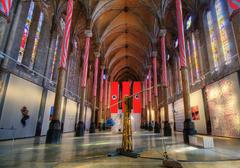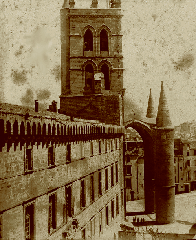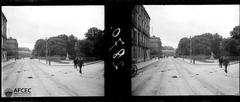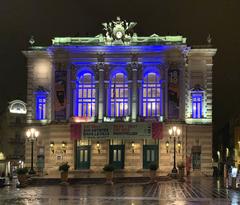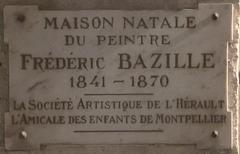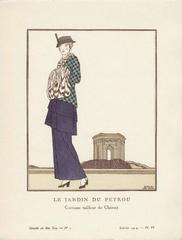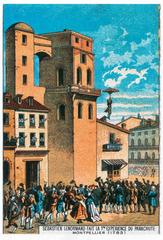Hôtel de Gayon Montpellier: Visiting Hours, Tickets, and History
Date: 03/07/2025
Introduction
Nestled in the heart of Montpellier’s historic Écusson district, the Hôtel de Gayon stands as a remarkable testament to the city’s layered past. With origins dating back to the late 13th century and significant transformations through the 17th century, this hôtel particulier—once the residence of wealthy merchants and later an aristocratic family—offers insight into the evolution of Montpellier from a medieval trading hub to a center of patrician life. The Hôtel de Gayon is renowned not only for its robust architecture but also for its rare medieval fresco, an exceptional work of art that reflects the city’s mercantile and religious heritage.
This guide provides a detailed overview of the Hôtel de Gayon’s history, architectural features, visitor information—including visiting hours and ticketing—accessibility, and tips for enhancing your experience at this unique historical site. Whether you are a history enthusiast, architecture lover, or a visitor seeking to explore Montpellier’s rich heritage, the Hôtel de Gayon offers a captivating window into the city’s past (France-Voyage; Montpellier Métropole; POP: la plateforme ouverte du patrimoine).
Table of Contents
- Introduction
- Historical Background and Socio-Economic Context
- Architectural Significance and the Medieval Fresco
- Symbolism and Cultural Importance
- Visiting Hours, Tickets, and Practical Information
- Guided Tours and Events
- Accessibility and Visitor Tips
- Nearby Attractions
- FAQ
- Conclusion
- References
Historical Background and Socio-Economic Context
The Hôtel de Gayon’s roots can be traced to the late 13th and early 14th centuries, when it was established as a maison-tour (tower house) in the heart of a thriving market district. The property originally belonged to the Carcassonne family, prominent drapers whose wealth was tied to Montpellier’s burgeoning textile trade. Their investment in such a grand urban dwelling underscores the economic power of the city’s merchant class during the Middle Ages (POP: la plateforme ouverte du patrimoine).
In 1661, Pierre de Gayon, a counselor at the Cour des Comptes, acquired and extensively renovated the building. The additions—including a monumental portal and spiral staircase—reflected 17th-century tastes and marked the transition from merchant residence to an aristocratic hôtel particulier. This fusion of medieval and classical elements makes the Hôtel de Gayon an exceptional surviving example of Montpellier’s urban evolution (POP: la plateforme ouverte du patrimoine).
Architectural Significance and the Medieval Fresco
Structure and Style
The Hôtel de Gayon’s architecture is characterized by:
- Robust Limestone Construction: Four main stories, with original 13th-century stonework preserved despite later modifications.
- Gothic and Classical Elements: Ogival vaulted ceilings and a spiral staircase introduced during 17th-century renovations.
- Facade and Courtyard: A monumental classical entrance and inner courtyard, typical of Montpellier’s hôtels particuliers (POP: la plateforme ouverte du patrimoine; France-Voyage).
The Medieval Fresco
The Hôtel de Gayon is home to one of Montpellier’s most remarkable artistic treasures: a fully preserved medieval fresco, discovered in 1999. This mural, dating to the late 13th century, originally covered all four walls of a chamber and is divided into two sections:
- Upper Frieze: A red-dominated narrative of Saint Eustache, the patron saint of drapers, based on the “Golden Legend.” The story traces the saint’s conversion, trials, and martyrdom.
- Lower Section: Features white quadrilobes on a blue background, a motif typical of medieval decorative art (Actu.fr).
The fresco’s restoration, completed in 2018, has preserved its vibrant colors and iconography, making it one of the rare extant examples of medieval domestic mural painting in southern France.
Symbolism and Cultural Importance
The fresco and the Hôtel de Gayon as a whole are rich in symbolism:
- Saint Eustache’s Legend: Chosen as the central theme, this reflects the importance of the drapers’ profession and the religious aspirations of Montpellier’s medieval elite.
- Regional Motifs: Kermes oaks (used for cochineal dye) and sheep symbolize the textile trade, while bells allude to Carcassonne, the drapers’ city of origin.
- Chambre Peinte: The painted room was historically a space for significant life events, imbuing the fresco with personal and communal resonance.
This artistic legacy, combined with the architectural evolution from medieval merchant house to patrician residence, encapsulates the layered identity of Montpellier (Actu.fr).
Visiting Hours, Tickets, and Practical Information
Location
- Address: 3 rue de la Vieille, Montpellier, in the heart of the Écusson district (Montpellier Métropole).
Opening Hours
- General Access: The Hôtel de Gayon is a private property and not open for daily visits.
- Special Events: Guided tours are offered during heritage events such as European Heritage Days (Journées du Patrimoine) and Semaine Médiévale. Typical tour times are in the mornings at 9:30, 10:00, 10:30, and 11:00.
- Advance Confirmation: Always verify event dates and times on the Montpellier Tourist Office website.
Tickets and Reservations
- Admission Fee: €3 per person during special guided tours.
- Booking: Tickets must be purchased in advance via the Montpellier Tourist Office. Tours are limited to small groups (maximum 10 participants) to preserve the site.
Guided Tours and Events
- Guided Tours: Led by expert guides, often history students from the University Paul Valéry, offering insights into the fresco’s iconography, the mansion’s history, and restoration efforts.
- Languages: Tours are primarily in French; inquire ahead for possible English-language options.
- Cultural Programming: The Hôtel de Gayon participates in events like the European Heritage Days, Semaine Médiévale, and lectures, enhancing visitor engagement with Montpellier’s heritage (Actu.fr).
Accessibility and Visitor Tips
- Accessibility: The historic structure is not wheelchair accessible; visitors with mobility challenges may find access difficult.
- Photography: Restrictions may apply to protect the fresco—ask your guide before taking pictures.
- Travel Tips:
- Book early; tours fill up quickly during event periods.
- Wear comfortable footwear as the Écusson district has narrow, cobbled streets.
- Combine your visit with other attractions such as Place de la Comédie and Musée Fabre (The Crazy Tourist).
Nearby Attractions
- Place de la Comédie: Montpellier’s iconic main square, lively with cafés and entertainment.
- Musée Fabre: A renowned fine arts museum, ideal for art and history lovers.
- Saint-Pierre Cathedral: A striking Gothic structure just a short walk from the Hôtel de Gayon.
- Other Hôtels Particuliers: Discover the network of aristocratic mansions that define the city’s historic center (Montpellier-France.com).
Frequently Asked Questions (FAQ)
Q: Can I enter the Hôtel de Gayon year-round?
A: No, public entry is only possible during special guided tours and heritage events. Otherwise, you can admire the exterior during a walking tour.
Q: How do I book a guided tour?
A: Reserve your spot through the Montpellier Tourist Office.
Q: What is the ticket price?
A: €3 per person for guided tours during special events.
Q: Is the site wheelchair accessible?
A: No, due to its historic structure, accessibility is limited.
Q: Are tours available in English?
A: Most tours are in French; contact the Tourist Office to check English-language availability.
Q: What else should I see nearby?
A: Explore Place de la Comédie, the Musée Fabre, and other historic mansions in the Écusson district.
Conclusion
The Hôtel de Gayon encapsulates Montpellier’s transformation from a medieval mercantile city to a refined, culturally vibrant urban center. Its impressive architecture, rare medieval fresco, and layered history make it a must-see for anyone interested in the city’s heritage. While interior access is restricted to special events, the mansion’s presence enriches any exploration of Montpellier’s historic core.
To experience the Hôtel de Gayon’s unique story, plan your visit during heritage events, book guided tours in advance, and make the most of your time in the Écusson district by exploring its many other treasures. For the latest updates on opening hours, tickets, and cultural programming, consult the Montpellier Tourist Office and consider using the Audiala app for curated tours and exclusive content.
References
- Hôtel de Gayon in Montpellier: Visiting Hours, Tickets, and Historical Highlights (France-Voyage)
- Gayon Hotel Montpellier: Visiting Hours, Tickets, and Historical Significance (Montpellier-France.com)
- Visiting the Hôtel de Gayon: A Guide to Montpellier’s Historical Site and Architectural Gem (POP: la plateforme ouverte du patrimoine)
- Visiting the Hôtel de Gayon: Hours, Tickets, History, and Travel Tips for Montpellier’s Medieval Jewel (Montpellier Métropole)
- Montpellier’s Multicultural Medicine (AramcoWorld)
- Montpellier: 15 Best Things to Do (The Crazy Tourist)
- Montpellier’s Architectural Heritage and Cultural Events (Montpellier Tourist Office)
- Montpellier: A City of Festivals and Architectural Heritage (France.fr)
- Montpellier Fresco Restoration and Cultural Significance (Actu.fr)
